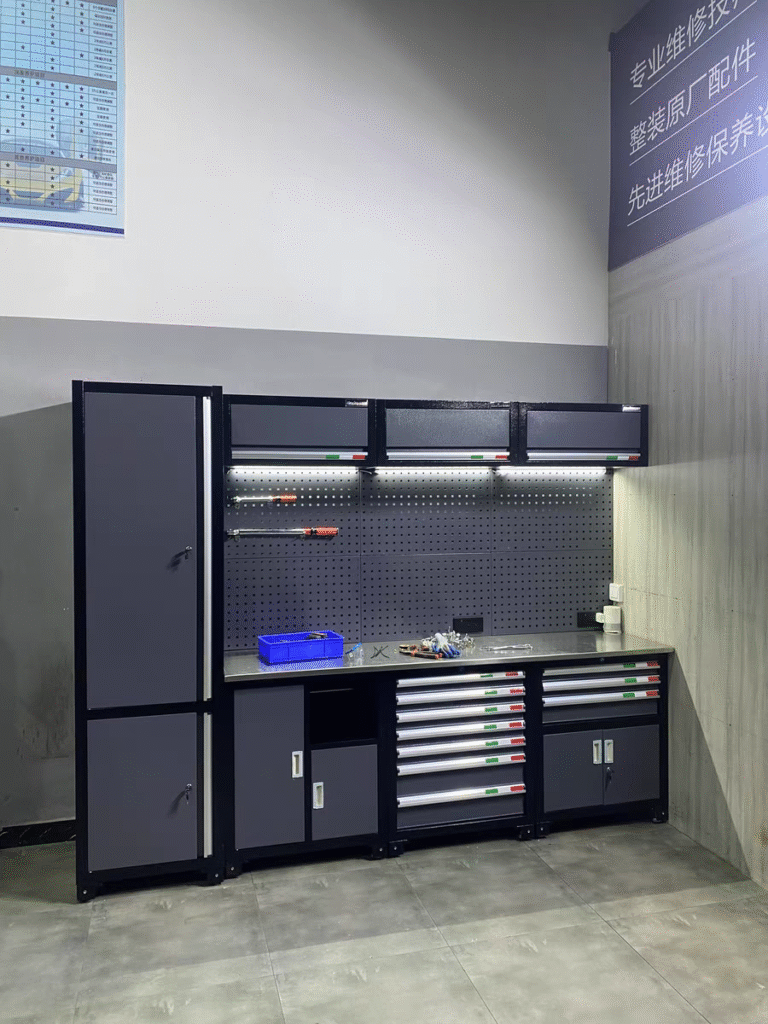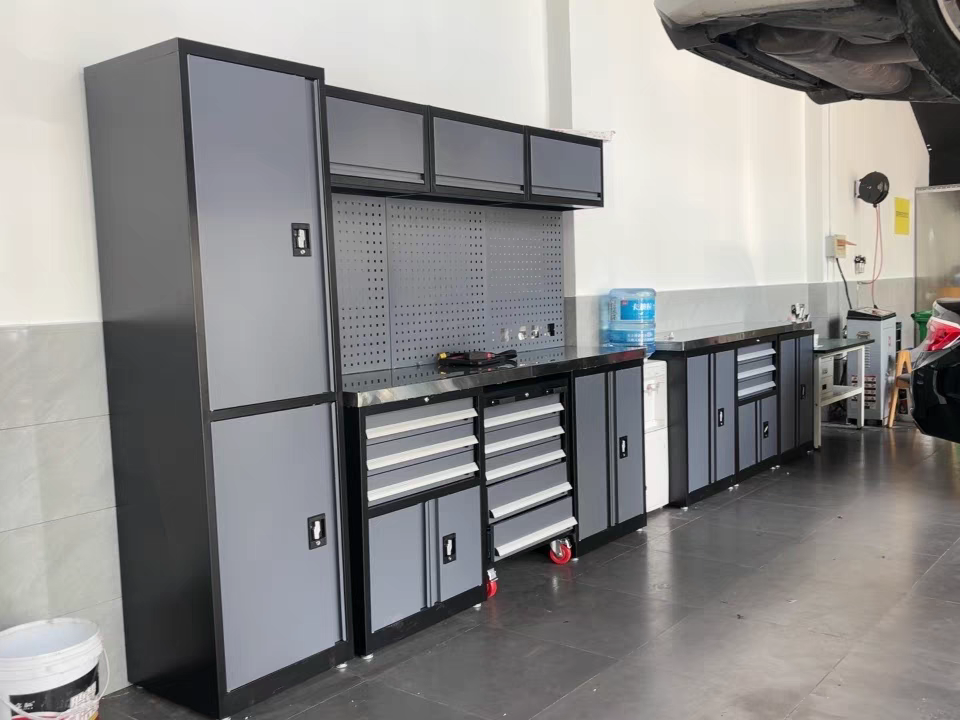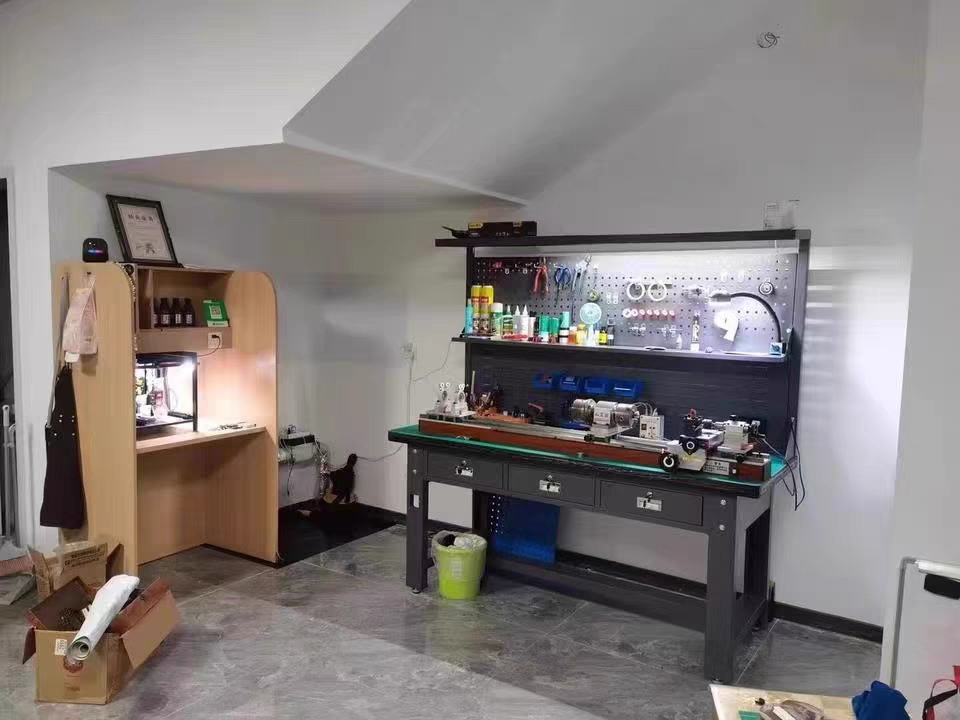Selecting Industrial Workbenches and Storage Solutions: A Comprehensive Guide for Auto Repair Shops, Workshops, and Bike Stores
When outfitting an auto repair shop, workshop, or bicycle store, selecting appropriate workbenches and storage solutions is crucial for operational efficiency. This guide provides objective criteria for evaluating large modular mechanical workbenches, heavy-duty drawer storage cabinets with casters, and combined workstations without promoting specific brands or products.
Understanding Your Workspace Requirements
Before selecting equipment, conduct a thorough assessment of your specific needs:
Space Analysis
- Measure available floor space and ceiling height
- Identify fixed elements that cannot be moved (columns, doors, electrical panels)
- Consider workflow patterns and how technicians move through the space
- Evaluate future expansion possibilities

Usage Intensity
- Estimate daily usage frequency and duration
- Identify weight requirements for tools and equipment
- Consider the types of repairs or services performed
- Determine if multiple shifts will utilize the same equipment
Evaluating Modular Mechanical Workbenches
Structural Integrity
- Examine the materials used in construction (steel gauge, wood density)
- Assess weight capacity ratings and testing standards
- Evaluate reinforcement points and connection mechanisms
- Consider vibration resistance for precision work
Modular Features
- Identify available add-on components and accessories
- Evaluate connection systems between modules
- Assess reconfiguration flexibility
- Consider compatibility with existing equipment

Ergonomic Considerations
- Evaluate height adjustability options
- Consider worksurface depth and width for specific tasks
- Assess legroom and clearance requirements
- Examine anti-fatigue features for extended use
Analyzing Heavy-Duty Drawer Storage Cabinets
Drawer Construction
- Examine drawer materials and thickness
- Evaluate suspension systems and weight ratings
- Assess drawer depth options and interior organization possibilities
- Consider security features and locking mechanisms
Mobility Features
- Evaluate caster quality and weight ratings
- Assess locking mechanisms for stationary use
- Consider floor surface compatibility
- Examine maneuverability in tight spaces
Durability Factors
- Research powder coating quality and scratch resistance
- Evaluate hinge and drawer slide construction
- Assess overall frame stability when fully loaded
- Consider environmental resistance (moisture, chemicals, temperature)

Selecting Bike Store Combined Workstations
Specialized Features
- Evaluate bike-specific holding mechanisms
- Assess tool storage integration for bicycle tools
- Consider space for parts and accessories organization
- Examine lighting options for detailed work
Customer Interaction Considerations
- Evaluate visibility of work processes for customer education
- Consider accessibility for customer questions
- Assess professional appearance for retail environment
- Examine noise reduction features
Implementation Considerations
Installation Requirements
- Evaluate assembly complexity and time requirements
- Consider specialized tools needed for setup
- Assess foundation requirements for heavy equipment
- Examine electrical and utility connections
Maintenance Factors
- Identify regular maintenance requirements
- Evaluate replacement part availability
- Consider cleaning procedures and requirements
- Assess long-term durability indicators
Budget Considerations
- Calculate total cost of ownership beyond initial purchase
- Consider potential productivity improvements
- Evaluate warranty coverage and duration
- Assess potential for equipment reuse or repurposing

Industry Standards and Certifications
When evaluating equipment, research relevant industry standards and certifications that apply to your region and industry sector. These may include:
- Safety certifications for commercial use
- Weight capacity verification standards
- Material quality certifications
- Environmental impact ratings
- Ergonomic design certifications
Making the Final Decision
After thorough evaluation, create a comparison matrix of your top options based on:
- Alignment with specific operational needs
- Long-term durability projections
- Flexibility for future changes
- Total cost of ownership
- User feedback from similar operations
This systematic approach to selecting industrial workbenches and storage solutions will help ensure your investment meets the specific needs of your auto repair shop, workshop, or bicycle store while providing long-term value and functionality.
